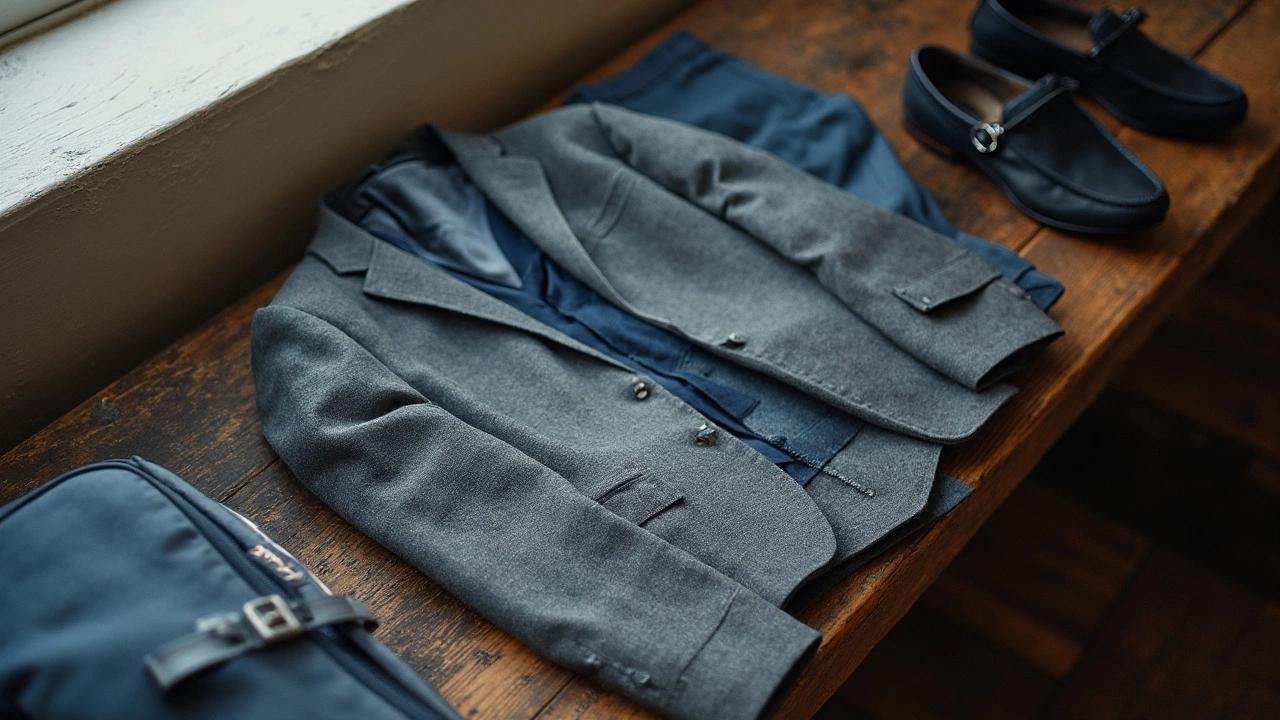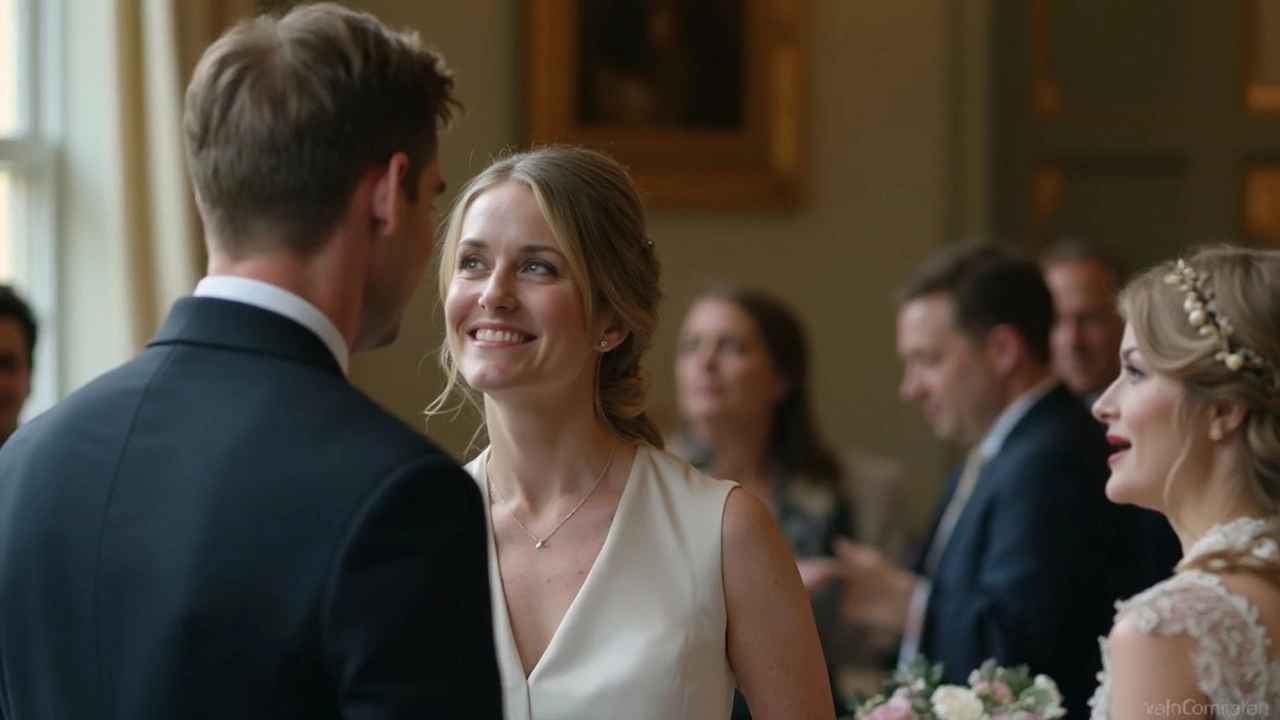The dress code for a wedding guest is usually spelled out on the invite. But when you’re the photographer, you’re behind the lens, dodging the flower girl and the caterer, trying to snag impossible angles without becoming the center of attention. One awkward wardrobe choice can make you the photo bomber in every shot. I’ve watched a photographer at my cousin’s wedding wear a loud red blazer, which ended up being the highlight of half the evening pictures—and not in a good way. If you think photographers can just throw on anything comfortable, brace yourself. Clothing colors for wedding photographers can truly make or break the whole day. Blending in isn’t just about not stealing the limelight—it’s also about respect, professionalism, and mastering the art of being invisible (well, nearly invisible).
Why Color Choice Matters When Photographing Weddings
First, there’s the obvious point: photographers should never outshine the couple or wedding party. Vibrant, flashy colors scream for attention—the last thing you want when you’re quietly snapping away as everyone’s eyes (and the camera’s lens) are trained on the newlyweds. There’s also the issue of reflection. Light-colored clothes, especially white and cream, can bounce light onto your own camera equipment or, worse, onto your subjects. Imagine the perfectly posed couple dappled in the pale glow of your own shirt. Darker clothes absorb light and dramatically reduce the risk of messing with your lighting setup. That said, even among darker shades, there’s a sweet spot between blending in and looking like you’re headed to a funeral.
Many pro photographers stick to dark neutrals. Think black, charcoal, navy, or deep gray. A survey by Professional Photographers of America found that 87% of wedding pros wear black as their go-to color—for good reason. Black clothing doesn’t call attention, it looks tidy even if you’re sweating from running up and down for that perfect overhead shot, and it hides dust, lens marks, and accidental smudges from crouching on the floor. Neutrals have a second bonus: they look professional in group shots if you accidentally end up in a reflective surface or catch yourself in a mirror background. If you’re shooting with a second shooter or assistant, matching or coordinating color outfits help the crew look unified, not like random extras from a crowd scene.
Occasionally, there’s pushback—people worry that all-black is too formal, or gives a somber vibe. Let’s clear that up: wearing dark colors as a photographer puts you in “stealth mode.” Wedding guests rarely notice the camera crew unless they do something distracting, so you can capture those special moments naturally. It’s not about blending in like wallpaper, it’s showing respect for the couple’s spotlight. And if you’re still worried about looking too severe, mix in a muted accessory—a soft blue scarf, subtle shoes, or gentle jewelry can keep the look friendly.
Different Wedding Styles and Adjusting Your Outfit Colors
Not all weddings are black-tie evenings or church ceremonies in candlelit halls. Beach weddings, rustic barn events, and backyard BBQ receptions all bring different vibes, and photographers need to flex their style to the couple’s vibe. But regardless of venue, loud or distracting colors remain a universal don’t. For a coastal ceremony or outdoor summer wedding, it can feel tempting to reach for white linen—but again, reflection is your enemy, and you don’t want to be mistaken for a member of the wedding party. Navy, olive, slate blue, or even muted taupe blend into daylight settings without reflecting sun glare back into your lens or onto your subjects. If the event has a color theme (like pastel florals or earth tones), go for subtle shades that nod to the palette. However, always avoid matching so closely that you’re mistaken for a groomsman or bridesmaid. That can make group photos chaotic and confuse guests looking for wedding staff.
Winter weddings open the door to deeper hues—think deep burgundy, forest green, or classic charcoal. You can’t go wrong with a well-tailored black blazer or cardigan. Layering works wonders if you’ll be inside and outside throughout the day—just make sure there’s no glaring logo or pattern peeking out. For backyard or farm weddings, I’ve found that deep blue denim or soft gray trousers can work, as long as they look polished and pair with a professional top—no ripped jeans or casual tees. Your attire should help you fit in with the guests, but also signal that you’re in charge of the camera.
And a quick word about shoes: aim for comfort and function, but keep them dark and simple. No neon running shoes, ever. If the terrain is muddy or uneven, wedding photographers swear by black loafers or comfortable boots that can take a beating—and still look unnoticeable in group shots. Think “practical ninja,” not “trail runner.”

The Science and Psychology Behind Color Choices for Wedding Photographers
Scientific studies show that we associate certain colors with specific roles—even subconsciously. Dark fabrics like black, navy, or charcoal cue professionalism. Black has been the uniform of choice for event staff since the 19th century, when theater workers wore it to disappear into stage shadows. This legacy holds up today, with cameras, tech, and crew nearly always opting for black, so they’re invisible in reflective surfaces or when ducking into the background.
But there’s more at play than just blending in. You want to project approachability without being mistaken for a guest, and that’s where the undertones in your outfit matter. Cool, deep tones (navy, slate, deep green) prompt trust and calm, while saturated primaries (bright red, yellow, turquoise) can feel loud and distracting. A 2023 European study on wedding event aesthetics confirmed that couples and guests subconsciously rate photographers in dark, neat attire as “more professional and less distracting” compared to photographers in lighter or patterned gear. That means you’re not just keeping out of the limelight—you’re also making it easier for people to relax and look natural around you.
This effect becomes critical when shooting candid moments. If you wear a distracting color or pattern, guests notice you coming; they pose, stiffen, or even avoid your camera. That wedding “magic” vanishes. On the other hand, a subdued, professional look helps everyone forget the camera is even there, so true emotions shine through.
Here’s a quick fact table to drive it home:
| Color | Blend-In Factor | Reflection Risk | Professionalism |
|---|---|---|---|
| Black | High | Low | High |
| Navy | High | Low | High |
| Charcoal | High | Low | High |
| White | Low | High | Medium |
| Light Gray | Medium | Medium | Medium |
| Beige/Tan | Medium | Medium | Low |
| Bright Colors | Very Low | High | Low |
Time and again, the advice is clear: opt for dark, solid colors and avoid large patterns or bold statements. If, like me, you sweat at summer ceremonies, don’t worry—many brands offer breathable, moisture-wicking performance wear in dark neutral shades that don’t sacrifice professionalism for comfort.
Real-World Tips and Stories from the Field
When my husband Liam asked me why I turned down his suggestion of a cute floral dress for a spring wedding shoot, I laughed. “You want all the grandparents to remember me instead of the cake or the couple?” he gets it now. Real talk: I learned the hard way at my first paid event when my olive-green blouse meant I blended into the greenery a little too well. The photos looked fine, but in some wide garden shots, my own reflection played peekaboo in nearby windows. So yes, environment matters, but nothing replaces a wardrobe built on stealth and common sense.
- Wedding photographer attire should be tailored, neat, and easily forgotten. No baggy sweatshirts, nothing frumpy or ill-fitting. Think comfort, but always one step up from casual Friday.
- Always have backup clothes of the same color in your car or gear bag. Spilled champagne or cake mishaps happen—you don’t get a pass to become an eyesore for the rest of the event.
- Layer as needed. Shirts, jackets, or wraps in the same shade mean you can adjust for freezing ballrooms or hot summer gardens without standing out or clashing with the event theme.
- Skip strong fragrance or jewelry that jingles. Yes, it’s not technically a color choice, but nothing distracts couples faster than a loud necklace or scented trail as you snap a quiet kiss.
- Watch out for logos. Even small brand marks can pop in any reflection or guest selfie. Go plain for ultimate invisibility.
- Double-check with the couple or planner. Some cultural or religious weddings have color rules; don’t risk offending by showing up in taboo hues.
I keep my kit of clothing simple: two black shirts, one navy blouse, and a gray cardigan that goes over anything. I choose tailored black pants (with deep pockets for memory cards; trust me, you’ll thank me later), and low-heeled, sturdy black loafers. When I work with second shooters, we coordinate colors, so our crew looks tidy, even in those unexpected behind-the-scenes shots guests snap for Instagram.
If there’s one takeaway: photographers aren’t there to make a fashion statement. The best compliment is a bride who says, “I forgot you were even there.” Because then, you know you let the love and the memories take center stage—not yourself. Get the wardrobe right, blend in, and every frame will feel effortless.

